Do Heavy Metals Harm Children? In this toxic world, we must all be vigilant about environmental and toxins. Our children’s futures depend on it.
Part of being a parent is protecting our children. Recently I witnessed a protective mother wrestle a large palmetto bug from her toddler’s mouth. “Lucas! Don’t put that dead cockroach in your mouth. It’s filthy,” cried the alarmed mother. You don’t know where it’s been.” I’m sure the mother was envisioning that bug crawling through the sewer doing what roaches do.
I thought, “Thank goodness for the mother’s vigilance. But it’s not where that giant tree-roach may have been, it’s what’s killed it, that makes it a concern. Probably a pesticide—like what they spray on crops and foods in the grocery store—but maybe a larger dose, smaller carapace.”
Mithridatism. You may not have heard of King Mithridates, from the Black Sea’s Pontus-region who made himself immune to poison. Seems that back in his day (2100 years ago), poisoning other people was almost as popular as K-Pop boy bands today. It was hard to take a bite of food without fear of being poisoned.
Back then, accessorizing a wardrobe included belt, shoes, purse, a ceremonial dagger, poison ring with secret compartment, poison necklace, poison ear-rings … “Humm? Whom shall I poison today?”
After poisoning his father, Mithradates’ mother and brother usurped the throne. Mithridates fled for his life. He grew up in such fear of being poisoned (a symptom of arsenic poisoning), he became a chemist/physician and mastered the art of making himself immune to poison by ingesting small amounts of many poisons frequently. [Kinda like eating pesticides/herbicides in commercial food today.]
Mithradates developed a special concoction of deadly botanicals (hemlock), venoms, and elements (arsenic)—a secret recipe perhaps akin to a fluffy duck cocktail. He gave the cocktail to ducks and drank the survivor’s blood to build his immunity. Unsubstantiated rumor has it that he may have also started the Jägermeister jello-shot trend in his spare time.
Eventually, Mithradates reclaimed his throne, committed matricide, and was eventually conquered by the invading Romans. To avoid torture, he took a large draught of his poisonous Mithradatium concoction, but alas, his immunity worked. He did not die. Obviously, his mind was not working cohesively, and it’s likely that his immunity also made him insane. His demise came by violent means.
Today, he is honored as the founder of Mithraism—the art and science of poisoning yourself with small doses to gain immunity to poison. Intrepid herpetologists may practice Mithridatism, despite the side effects—jealousy, vindictiveness, delusions, fear of tight collars, and sarcasm—to gain immunity to the venom of snakes they handle.
Do Heavy Metals Harm Children? Today’s Unruly Child.
Is your child becoming more unruly and uncooperative? You know, more like the neighbor’s children?
Heavy metals (lead, mercury, cadmium, aluminum, etc.), toxic-compounds, contaminants such as pesticides, and drug hormones (from municipal tap water) in your child’s body could be adding up, and contributing to, aggressive or anti-social behavior, according to world-leading researcher Neil Ward, professor of chemistry at the University of Surrey, UK1.
While one bite of food does not have a high amount, heavy metals can accumulate in your child’s brain causing inflammatory reactions that disrupt proper emotional responses and hormonal balance.
Toxins in food are cellular disruptors – they inflame the cell membranes, block the absorption of nutrients that make energy, stop hormone messengers from docking with cell receptors, support pathogenic biofilms in the intestines, and activate the immune system when it does not have a pathogen to fight. This is dangerous to everyone but especially dangerous to children.
Ward states that lead acts as an “anti-nutrient,” that hinders the cell’s utilization of metabolic nutrients such as magnesium, zinc, and vitamin B1. High lead levels are linked to low intelligence, inappropriate school behaviors, juvenile delinquency, and violent behavior2. Aluminum has also been linked to anti-social behavior.3”
Each child has a different threshold where heavy metal exposure tips them into aberrant behaviors such as tantrums, attention deficit, hyperactivity, violence, and even autism-spectrum concerns. Some children are more resistant than others due to their body’s nutrition and genetics. But when the tipping point is reached, developmental damage occurs and lives are ruined.
Heavy Metals (Poisons) In Food
Contaminants (metals, pesticides) and dangerous prescription drugs get into our food from the air (air pollution, car exhaust) and from water (agricultural irrigation from polluted rivers and pesticide use). Food processing can add toxic food dyes, spoilage resistant chemicals (preservatives), waxes, varnishes, and pesticide-fumigants during processing. These neurotoxic chemicals all add up to altered behaviors in susceptible children.
Toxic Big Three
- Mercury (Hg): Unlike the mercury used in glass thermometers, methylmercury, a deadly, cell-mutating form of mercury from industrial uses, has polluted the Earth’s oceans top to bottom and comes back to the human body by eating seafood or breathing the air near industry. Mercury is a devastating health risk to pregnant and nursing women and women who may become pregnant, as mercury can cross the blood-placenta barrier4.
Today, children are born with poisonous mercury in their brains and some studies reveal that the amount directly correlates to the amount of “silver amalgam (aka mercury) filling in the mother’s mouth coupled with the amount of mercury-accumulated fish in the mother’s diet.
One study found brain and personality disorders in children who had higher levels of mercury in their umbilical cord blood sample, including deficiencies in: motor function, language skills, memory, ability to apply their attention, and visual processes5. Other studies find genetics influence a child’s susceptibility to mercury.6
High mercury levels have been found in high-fructose corn syrup – a GMO-corn sweetener used in many children’s beverages. But the dangers don’t stop, as it’s associated with diabetes, obesity, and inflammation. High fructose corn syrup is used in children’s fruit drink beverages, cereals, and foods. Beware, even health food stores such as Whole Foods sells children’s beverages with high fructose corn syrup.
- Cadmium (Cd): Linked directly to cancer, cadmium damages cellular genetics and causes inflammation which, according to Time Magazine, 2/2004, is the silent killer behind many chronic degenerative and auto-immune diseases. Cadmium accumulates in the body and can stay there forever unless detoxification agents (often advocated in natural therapeutics) are used to purify the body. In children, cadmium causes cancer, brain damage, incompetent immune systems, behavioral problems, and learning disabilities.
Ninety percent of children’s exposure to cadmium comes from food, according to the Agency for Toxic Substances and Disease Registry7. Low levels are dangerous, and low levels are now found in all commercially grown foods.
- Lead: A powerful, deadly toxin that can affect nearly every system in a child’s body. Ever since lead was used in paint that children would peel and eat, we’ve seen the horrendous effects of lead poisoning—apathy, violent crimes, antisocial behavior8.
Half of the children in the USA between the ages of 1 and 5 have blood lead levels greater than the government-allowed level of 10 mcg per dl of blood, according to the U.S. Center For Disease Control.
It’s noteworthy that analysis of ossuary bones reveal that one of the major reasons for the fall of the Roman Empire was massive lead poisoning: lead smelting polluted the air; lead-lined aqueducts, water pipes, and hot tubs saturated the water supply; and lead was added to honeyed wine as a tonic.
Children are exposed to lead most commonly through lead-based paint and lead-contaminated dust in old buildings, however, another alarming avenue is contaminated drinking water. Lead from car exhaust (before it was outlawed and cadmium used as a gasoline additive), has settled from the air onto the Earth and is being recycled through crops that end up on the dinner plate. Air pollution affects organically-grown food as well.
Even with new laws reducing lead exposure from the seam in canned goods, the new plastic liners have a neurotoxic chemical called Bisphenol-a (BPA)that is a flagrant hormone disruptor that mimics estrogen and thus interferes with both male and female hormone balance. It’s now being found that BPA-free plastics simply contain other hormone disruptors, so minimize contact with plastic water bottles. There are glass bottles in protective sleeves may work better for you.
Disruptions in children’s gut microbiomes from: 1) antibiotics, prescription and in commercial meat and farm-raised fish, 2) high carbohydrate diets, and 3) use of tap water (chlorine, fluoride) can mean “leaky gut” where more toxic elements enter the body and cross the blood-brain barrier.
Now that we understand that heavy metals harm children, what can you do to keep these dangerous toxins out of the lives of you and your children?
Now for the good news. Human beings have coexisted with heavy metal toxicity for thousands of years. They occur naturally in water and volcanic air. The body has innate detoxification methods in place.
For good health in a polluted world, a person should avoid exposure to heavy metals as much as possible – buy organic food, filter tap water, and shun sources of mercury. Support normal detoxification pathways with nutrients (glutathione, methyl donors, chelating herbs and zeolite (lead removed), and maintain healthy intestinal flora. These are popular subjects in natural health, and we will discuss these and more in this blog.
- Gene Testing Reveals Innate Detoxification Capabilities. How well does a person’s liver detoxify herbicides such as cancer-linked glyphosate (RoundUp9)? How well does the liver initiate innate detoxification activities? Knowing your body’s ability empowers taking protective steps.
- Eat Organic. And have your children eat, a healthy ORGANIC diet. This means shopping at health food stores and farmers’ markets where organic, transitional organic, non-chemical fertilizer foods can be obtained. Organic foods can be purchased online and shipped to your door. The U.S. Environmental Protection Agency has found that children who eat wholesome, basic foods absorb less lead from the environment10.
- Wash Your Produce before preparing it for the table. Explained in the book, The Pro-Vita! Plan For Optimal Nutrition (Tips), the Dr. Hazel Parcells’ (UCLA) recipe for cleansing food and drawing out heavy metals may help clean up store-bought produce. That recipe is 1-Tbsp Original Clorox to a sink of water. Soak produce for 10 minutes, and rinse soak in pure water. Restaurants often use this recipe to prolong the storage-life of salads. The book explains that hydrogen peroxide and plant-based cleansers can be used to steer clear of chlorine.
- Avoid using commercial breakfast cereals. They are little more than starch, sugar, synthetic vitamins, genetically-modified grains, pesticides, herbicides, and preservatives. Many kinds of cereal feature genetically modified grains – corn, soy, and unfortunately, rice are being modified to tolerate glyphosate pesticide. Make delicious smoothies with organic fruit; pure water; and non-GM, non-soy protein; and organic vegetable greens. Organic almond milk makes a tasty base for smoothies.
Future parents, moms, and pops can do a nutrition/herbal based detoxification program before conceiving to give their baby the best start on life possible.
While it is true that heavy metals harm children, we must understand that it is impossible to avoid all health-damaging heavy metals in food. Learn to minimize your and your child’s exposure to the worst. Know the “Dirty Baker’s Dozen” foods that have massive pesticides, toxins, and chemicals – commercially produced:
- Apples (plus, a new GMO Arctic)
- Bell peppers
- Blueberries
- Celery
- Farm-raised fish
- Grapes
- Kale/collard greens
- Lettuce
- Nectarines
- Peaches
- Potatoes
- Spinach
- Strawberries
Avoid the Dirty Baker’s Dozen. A good rule is, always buy these foods as organic, or do not eat them.
Worried if your body is approaching the disease threshold of retaining toxic pesticides and heavy metals? Good advice is to do an annual purification program. But caution please, such programs must be done correctly. For many years, natural health practitioners have advocated the importance of building the liver, cleansing the body (extracellular matrix), drainage and neuroendocrine support, and cleansing inside the cells with cellular nutrition that boosts the cell’s glutathione—the most protective and effective antioxidant for the brain, liver, every cell, and the brain.
In this toxic world, we must all be ever vigilant about environmental pollutants and toxins. Heavy metals harm children, so their future depends on our vigilance. Make your vote ever-present for a cleaner world by supporting organizations that alert lawmakers and the media to potential and existing dangers of heavy metals. Together we can build a legacy of health for future generations.
Thank you.
WellnessWiz Jack
References: Do Heavy Metals Harm Children?
- Ward, N. Technological change and the regulation of pollution from agricultural pesticides, Geoforum 26(1):19-33 · Feb 1995
- Ernhart, C.B., Effects of Lead on IQ in Children Environ Health Perspect. 2006 Feb; 114(2): A85–A86. doi: 10.1289/ehp.114-a85 PMCID: PMC1367853, PMID: 16451840
- Mohamed, F.E.B. et. al., Assessment of Hair Aluminum, Lead, and Mercury in a Sample of Autistic Egyptian Children: Environmental Risk Factors of Heavy Metals in Autism Behavioural Neurology Volume 2015, Article ID 545674 Pediatrics Department, Faculty of Medicine, Ain Shams University, Cairo, Egypt, National Institute of Standards, Giza, Egypt, Community Medicine Department, Ain Shams University, Cairo, Egypt, Academic Editor: Michael E. Behen, Accepted 2 September 2015, doi.org/10.1155/2015/545674
- Cecilia Nwadiuto, Amadia Zelinjo, NkeirukaIgwezeb Orish, Ebere Orisakwea, Heavy metals in miscarriages and stillbirths in developing nations, Middle East Fertility Society Journal Volume 22, Issue 2, June 2017, Pages 91-100 doi.org/10.1016/j.mefs.2017.03.003
- Rice, K.M., Environmental Mercury and Its Toxic Effects, J. Prev Med Public Health. 2014 Mar; 47(2): 74–83. doi: 10.3961/jpmph.2014.47 PMCID: PMC3988285.2.74, PMID: 24744824
- Andreoli, V. and Sprovieri, F. Genetic Aspects of Susceptibility to Mercury Toxicity: An Overview Int., J Environ Res Public Health. 2017 Jan; 14(1): 93. doi: 10.3390/ijerph14010093, PMCID: PMC5295343, PMID: 28106810
- Agency For Toxic Substances & Disease Registry, U.S. Gov’t., Toxicological Profile for Cadmium, 9/2012, CAS#:7440-43-9
- Boutwell, B.B., et. al., Aggregate-level lead exposure, gun violence, homicide, and rape, PLoS One. 2017; 12(11): e0187953 doi: 10.1371/journal.pone.0187953 PMCID: PMC5703470 PMID: 29176826
- Tarazona,J.V., Glyphosate toxicity and carcinogenicity: a review of the scientific basis of the European Union assessment and its differences with IARC, Arch Toxicol. 2017; 91(8): 2723–2743. doi: 10.1007/s00204-017-1962-5, PMCID: PMC5515989, PMID: 28374158
- U.S. Environmental Protection Agency, Office of Pollution Prevention and Toxics (7404), EPA-747-F-01-004, 11/01
- Feature Image Courtesy of: Sangoiri – 123rf.com


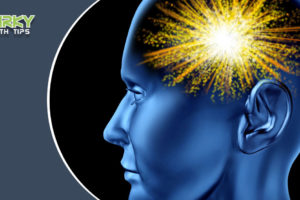


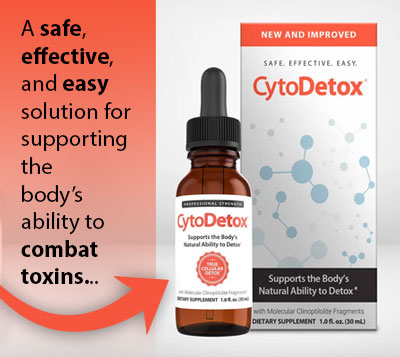
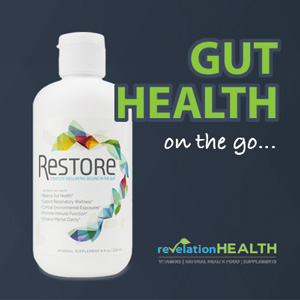
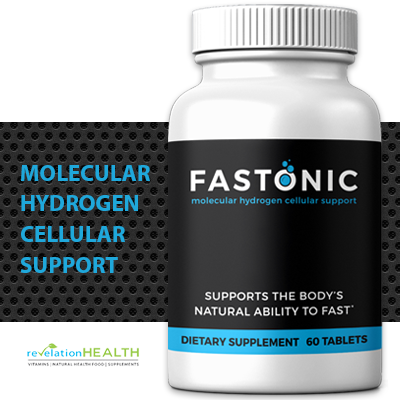
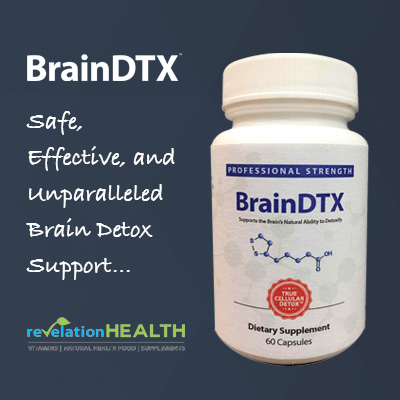
9 Comments
Leave your reply.